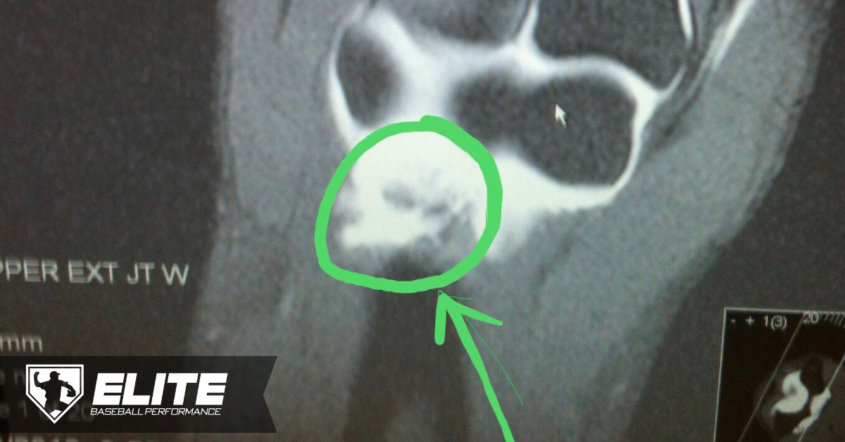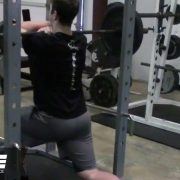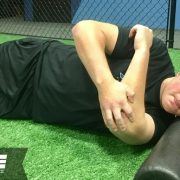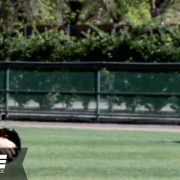The Three Hardest Challenges of Tommy John Rehab
My elbow hurts a lot.
My arm feels really tight.
I feel great!
It was really sore the next day.
I had nothing on it – no movement and no velocity.
It started off good, then it started to hurt.
The ball was really coming out well, no pain at all!
It just feels…dead.
If you’re a pitcher who’s gone through Tommy John surgery, you’ve probably uttered all the statements above. If you’re a rehab professional, coach or parent, you’ve probably heard them too as the pitcher(s) in your life finished up their latest throwing session.
As a coach who had two Tommy John surgeries, I know that the hardest part of both of my rehabs – and they were both hard for the same reasons – was the randomness with which the arm recovers and the mental toll it takes on you. Today as a coach, I mentor young pitchers through their own recoveries and hear the same difficulties voiced regularly. Today, we’ll discuss the mental challenges of the surgery in its various forms.
First: Why The Last Part of Tommy John Recovery Is The Hardest
After about month eight or nine of the recovery the pitcher is capable of doing a lot of new things that make his arm hurt, get sore, and react in new and confusing ways. The player is also pretty much done with the formal, written throwing protocol, so months 9+ end up being up to interpretation, much like one of those make-your-own-adventure books. This is because pitchers in this last phase are:
- Throwing nearly at or just near full-speed
- Throwing off-speed stuff again
- Increasing frequency of bullpens
- Beginning simulated games against live hitters
- Getting physically stronger and doing more demanding lifts in the weight room
- Feeling the pull that they are almost ready
Because of this, the body is getting huge doses of new things – it’s not just soft-tossing grenades anymore, the pitcher is putting the same forces through his arm that tore it in the first place. He’s mixing all his pitches, and curves, sliders and changeups all make the healing ligament react and get sore.
Workouts in the weight room are crucial to returning him to game shape and warding off future injury, but as strength returns, heavier weights cause the elbow to react and get sore, sometimes painful as well. How does a pitcher balance all these things?
This question raises many, many more questions:
How much should he lift after a hard bullpen that caused a little pain? Should some exercises be omitted, altered, or used with lesser resistance?
Should bullpen pitch count increase? If so, how much?
Should rest between pens begin to decrease? If so, how much?
How much should a pitcher throw in between bullpens?
Is long-toss okay? If so, when?
Are weighted balls appropriate? If so, when?
When can a pitcher return to a game?
When can he pitch on back-to-back days in relief?
His arm hurts a LOT – is that normal? Is it torn again? How long should I wait to throw?
The common answer to all the above is this: it depends. It’s a very unsettling answer.
There are a million variables that can’t be addressed in the written throwing protocol. There’s just too much variation and too much throttling up and down to account for it all. The experience is similar for players but also completely and painfully unique.
If the questions above seemed confusing…imagine you’re a 19 year-old kid going through this for the first time – it’s a lot.
Challenge #1: Interpreting and Coping with Types of Discomfort
There are four main feelings a pitcher will experience in his recovery:
- Pain: that sharp, stabbing feeling.
- Soreness: that dull, burning feeling.
- Tightness: When the arm feels constricted and doesn’t move like normal, as if the joint is swollen or needs to “pop.”
- Deadness: a general dull, achy, fatigued feeling in which the arm just…can’t.
Which of these is worse? Pain gets a pitcher’s attention the fastest, but all are unique. Soreness often turns to pain. Tightness turns to any of them and makes throwing very uncomfortable. Deadness is demoralizing.
Some of the best advice I ever received was from Stan Conte, former head ATC of the Los Angeles Dodgers. He basically just reminded me that my arm had holes drilled in it, and that the muscles and ligaments were sliced open before being stitched back together. He explained that it would never be “normal” again, and that weird pain, sensations and unexplainable things would happen. I just had to learn to accept some of that.
When I thought of it that way, I stopped dwelling on slight pain and the little aches and soreness – those were just from my arm being, well, a lot like an old car. Old cars make lots of weird sounds and are a little bumpier, but they still drive just fine.
Pitchers who have had a surgery – any surgery – are never going to feel fresh off the assembly-line again. When they stop believing they have to feel perfect and brand new to pitch, things mentally get a lot better.
Challenge #2: Dealing With The Randomness of Pain
What’s extra frustrating about the recovery is that there is little reason why one day is a good day and why another day is a bad day.
Sure, when a player overdoes it or does something new, the arm usually reacts in a negative – but still normal – way. However, lots of times a player will be adequately rested and has set himself up for success in his routine…just to find lots of pain and discomfort that doesn’t add up.
This – unfortunately – is also normal. It’s especially frustrating and worrisome because a player feels helpless to prevent or predict good and bad days. The follow exchange was had between myself and one of my college pitcher clients, who I have been mentoring through the last stages of his rehab in conjunction with his school coaches. It sums this point up perfectly.
Challenge #3: Expectations That Are Set Too High
Lastly, there’s this idea that every player should be back on the mound, dominating and throwing 2-5mph harder at the 12-month mark. This just isn’t reality for most pitchers. Most pitchers will feel like their old selves again somewhere between the 14 month and 24-month mark. Even when a pitcher is back in games, he often won’t reach his previous level of statistical performance until the second competitive year back…if he does so at all.
I doggy-paddled through my first season back following each surgery, struggling to keep my head above water and not get released by the team. I posted league-average ERAs in both seasons and could not locate my off-speed stuff to save my life. I got by with good velocity and a fierce will to compete. Had I not had both of those things, my career would have ended; I would not have had enough tools to get by in pro baseball.
But in year two following both surgeries, my command of all three pitches improved dramatically, and my velocity went up another tick or two. Year two was much, much better than year one. Year one was hard.
Tommy John Surgery: It’s a Long, Hard Road.
A lot of people take for granted just how hard it is to return from Tommy John Surgery; it’s not a guarantee for any pitcher, and the mental toll is often greater than the physical. The uncertainty, randomness, pain and daily grind will challenge even the toughest of athletes. The big challenge is staying the course and trusting that tomorrow will be better…even when today wasn’t.
Want To Become A Better Pitching Coach and Save Arms?
Enroll in Coach Dan’s Free Pitching Coach Video Course. It’s one video per day for five days sent to your inbox.
Dan Blewett
Latest posts by Dan Blewett (see all)
- What Causes A Mental Meltdown in Baseball? - September 3, 2019
- Two Common Curveball Mistakes Pitchers Should Avoid - July 30, 2019
- Is Heavy Lifting Good For Pitchers? - July 2, 2019












Great summary of what I see I’m my pitchers, but have not experienced myself. This should be standard reading that each athlete receives from his Dr. Thank you!
Hi Dan, I don’t have a question but wanted to say thank you. My son is coming back from UCL reconstruction and is facing the ups and downs. The constant unknowns, velocity changes, dead arm, all cause concern, and questions. He was progressing incredibly well, then had some setbacks and we were chatting last night about resources when I found your article. It was after reading your article “The Three Hardest Challenges of Tommy John Rehab” we were assured this is all common.
Thanks for taking the time to write such a beneficial article.
Hi Randy-
I am curious how your son is doing post TJS. You mentioned he had some setbacks. My son as well. Can I ask what kind of setbacks he experienced? Has he been able to work through them or is that still an ongoing process? Any info is appreciated as my son is in the middle of a setback himself and the uncertainty is probably harder for me to take than him. Thank you in advance. Mark
Thank you for this informative post. My son is five months in after UCL repair with an internal brace. It’s good to know the ups and downs are a normal part of the process. He was moving along great, then the tightness set in after mixing in off-speed.